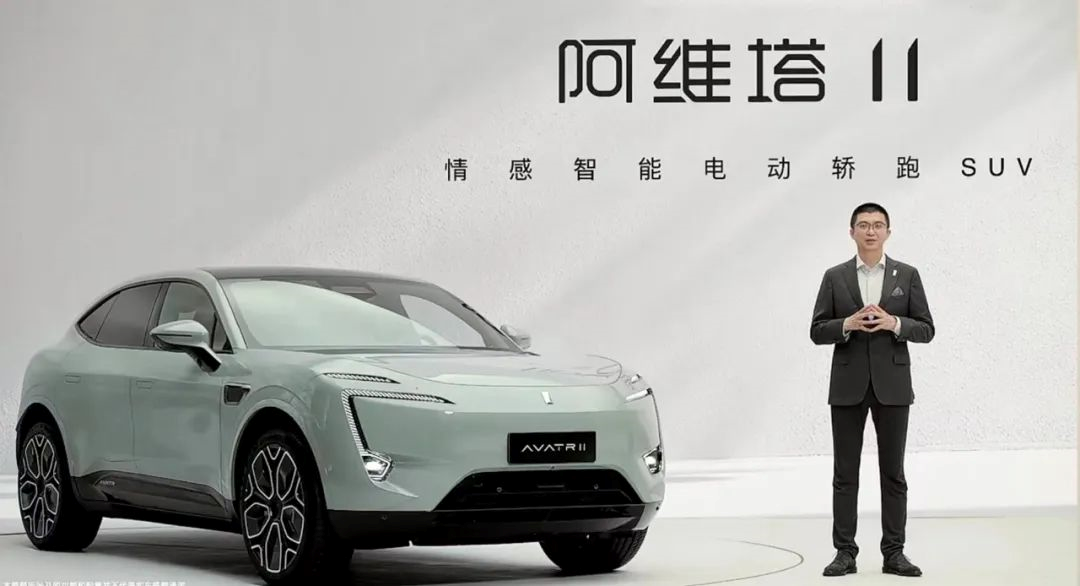| Author | Qiu Kaijun |
|---|---|
| Editor | Wang Lingfang |
| “There is absolutely competition, confrontation, and PK in this kind of game. “ | |
| These words refer to the state when the three major partners- Changan Automobile, Huawei, and CATL- were working together to create the AVITA 11. However, the chairman and CEO of AVITA Technologies, Tan Benhong, did not feel troubled by these conflicts, instead believing that this is the rhythm that should be followed when creating great products. | |
| AVITA has an impressive heritage- the independent brand Changan Automobile, one of the best, holds a 40.99% stake; Huawei, the leader of intelligent-networked vehicles, and China’s strongest ICT company, while not a shareholder, is deeply involved. Contemporary Amperex Technology (CATL), the world’s largest power battery manufacturer, has invested in several auto companies, but is only the second largest shareholder in AVITA with a stake of 17.1%, which is a clear indication of their investment commitment. | |
| However, when strong alliances are formed with strong partners, who will dominate who? Changan is the largest shareholder and thus naturally the decisive factor. But the relationship between Changan and Huawei and CATL is not simply that of a supplier. “We discussed many times together and finally shook hands when it came to performance and design aspect to achieve what we have today,” said Tan Benhong. | |
| On August 8th, AVITA 11 was officially launched, with three versions priced between 3.499 and 4.099 million yuan. The limited edition AVITA 011, priced at 600,000 yuan, was launched. On August 6th, AVITA held a media communication meeting at its flagship store in Longhu Times Street, Chongqing, where not only Tan Benhong participated, but also Wang Jun, COO of Huawei Intelligent Automotive Solutions BU, and Xiang Yanhuo, general manager of CATL China’s passenger vehicle solution department. | |
| In the era of intelligent electric vehicles, the core competitiveness of vehicle manufacturers needs to be rebuilt. However, if based solely on research and development, it is both untimely and lacking in the necessary capacity. | |
| Under the CHN model, the vehicle manufacturer still takes the lead, but the approach is through collaborative development, with strong participation from Huawei and CATL. CATL can even enjoy investment returns, which in theory, is an excellent arrangement. | |
| On June 25, at the Chongqing Auto Show, Changan Automobile Chairman Zhu Huarong (left one), Huawei Rotating Chairman Xu Zhijun (right two), and CATL Chairman Zeng Yuqun (right one) hosted the presentation of AVITA. Under the full empowerment of CHN, how does the product strength of AVITA 11 perform? Is Huawei open to this car? How will the three major players collaborate? These are the questions we try to answer in this article. | |
| The AVITA 11 has officially launched, and all of the models feature twin motors, as stated by Tan Benhong during the online launch event. | Avita 11 comes in three models: long-range dual-motor version, long-range dual-motor luxury version, and ultra-long range dual-motor luxury version, with ranges of RMB 349,900, RMB 369,900, and RMB 409,900, respectively. |
The long-range version has a battery capacity of 90kWh with a range of 555 km (CLTC); the ultra-long range version has a battery capacity of 116kWh with a range of 680 km.
In keeping with Avita 11’s focus on performance and luxury, there are currently only dual motors available. With a maximum power of 425kW and a maximum torque of 650 Nm, the long-range version has an acceleration of 0 to 100 km/h in just 3.98 seconds, while the ultra-long range version has an acceleration of 0 to 100 km/h in just 4.5 seconds.
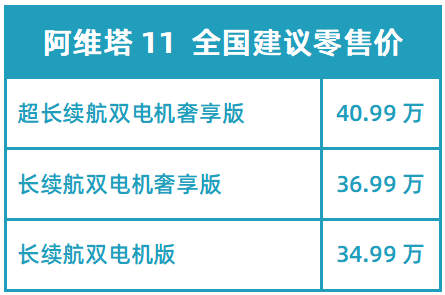
The long-range version and Avita 011 will begin to be delivered to customers in December this year, while the ultra-long-range dual-motor luxury version is expected to be delivered to customers in the first quarter of next year.
Where to buy?
After Huawei and Seres cooperated to launch the Wanjie brand, Seres’ sales, which were originally very low, have recently increased significantly, reaching a level of 7,000 units per month. Of course, this is partly due to Huawei’s channel capabilities. In addition to Seres, the HUAWEI Inside model, the Jihoo Alpha S HI version, which is also cooperating with Huawei, will also enter some of Huawei’s stores.
Of course, Avita 11 is also benefiting from Huawei’s sales promotion.
Wang Jun revealed that Avita is discussing sales matters with Huawei’s terminal business department.
Tan Benhong also stated that Avita’s cooperation with Huawei includes the content of channel display. “There must be a solution.”
In terms of its own channels, Tan Benhong provided a relatively clear introduction.
“We will build experience centers and delivery centers in 110 cities this year.” On the day of the listing on August 8th, the first ten Avita experience centers and experience spaces officially opened for business in synchronization.
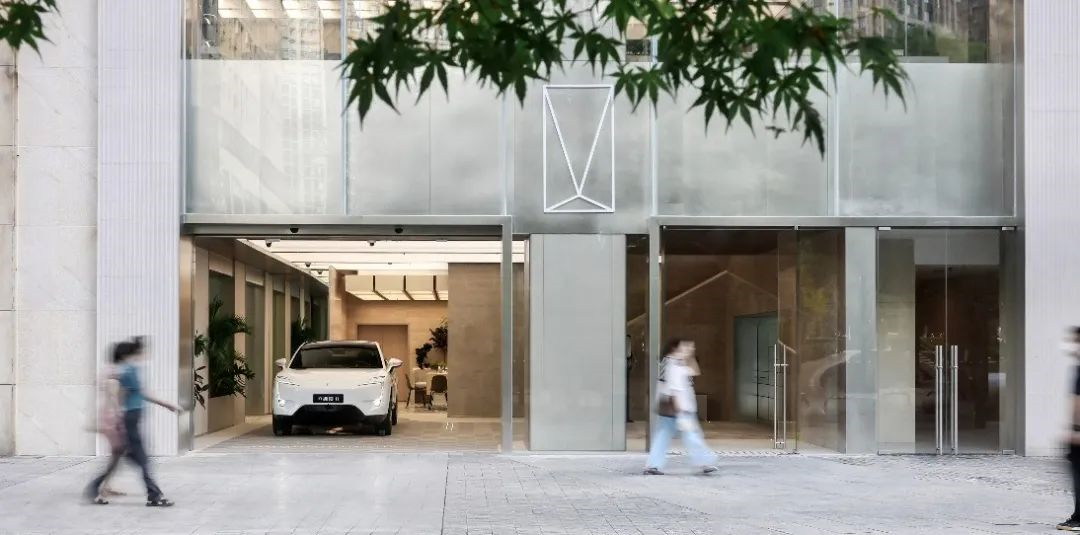
“Overall, Avita’s channels should be flexible. Wherever users are, we go wherever users want to see our products or want to buy our products, we try to go there.” Tan Benhong said.
Three “ceilings”
When describing Avita 11, Tan Benhong is confident: “This car… has achieved three “ceilings” in the price range of RMB 350,000 to RMB 450,000 in terms of appearance, overall performance, and intelligent driving.“On the aspect of appearance, there are three outstanding features of the Avita 11. First is the original design, creating a sense of futuristic design; second is the extraordinary wheels and tail wing molding the sense of sportsmanship; the third is the golden ratio, creating a good-looking body and a spacious seating space.
The Avita 11 is designed by the Avita Global Design Center in Munich, Germany, emphasizing the sense of future style. The front of the Avita 11 is called the disk-wing style, made up of a large closed grille and unique headlights. The headlights are split, with a slender turn signal lamp on top, an L-shaped daytime running light on the bottom, and an integrated low and high beam lamp at the bottom.
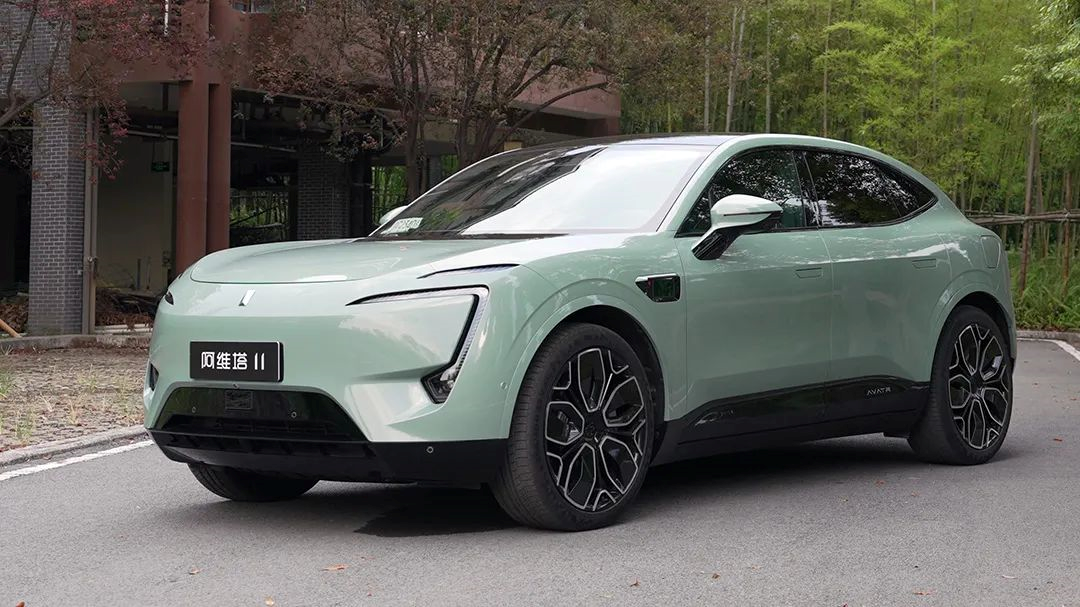
The daytime running lights on the Avita 11 are both exaggerated and unique in shape and length, providing strong identification in the current trend of homogeneous front-face designs.
The cabin is also very distinctive in design. The Avita 11 creates a design origin “Vortex Emotional Whirlpool” in the middle of the front row. Its main body is a sound system, but the bottom is designed in the form of a vortex. From this center, the air conditioning outlets, dashboard, co-driver entertainment screen, and black trim panel are sequentially unfolded on both sides.
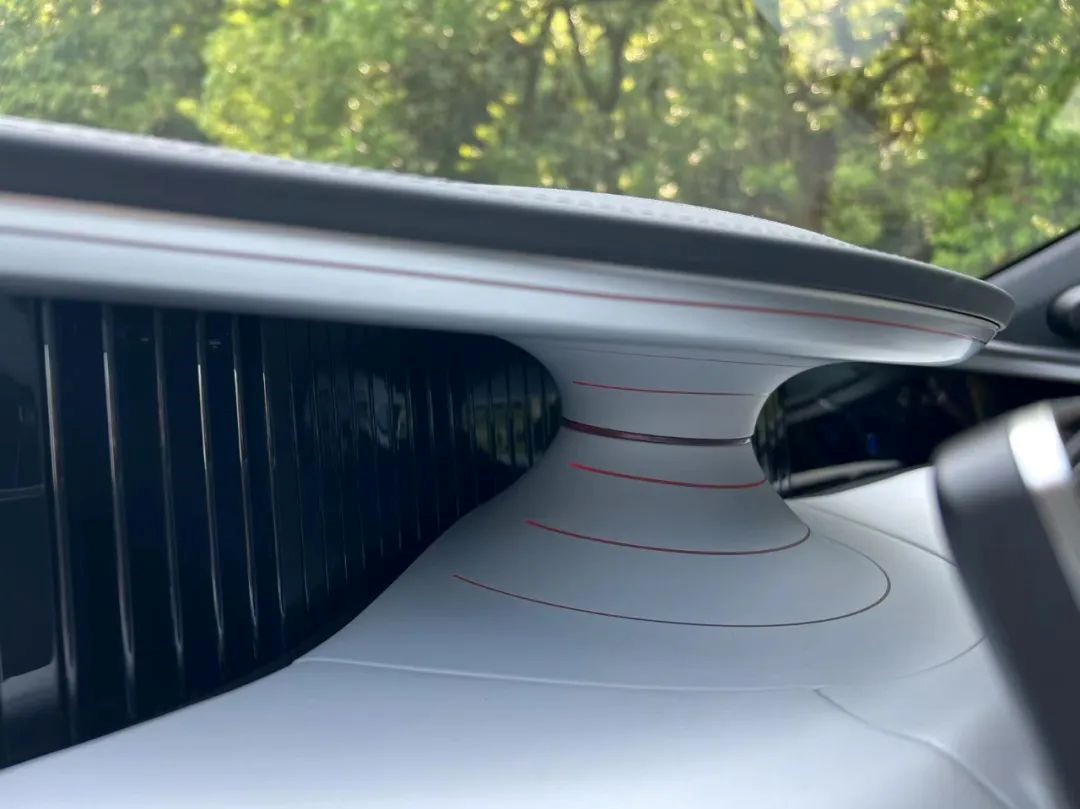
On the side of the Avita 11, the main promotion is a set of 22-inch wheels that seem disproportionately large. At the rear of the car, a hidden lifting tail wing is installed. Although seemingly incompatible, these two components highlight the excellent sports performance of the vehicle.
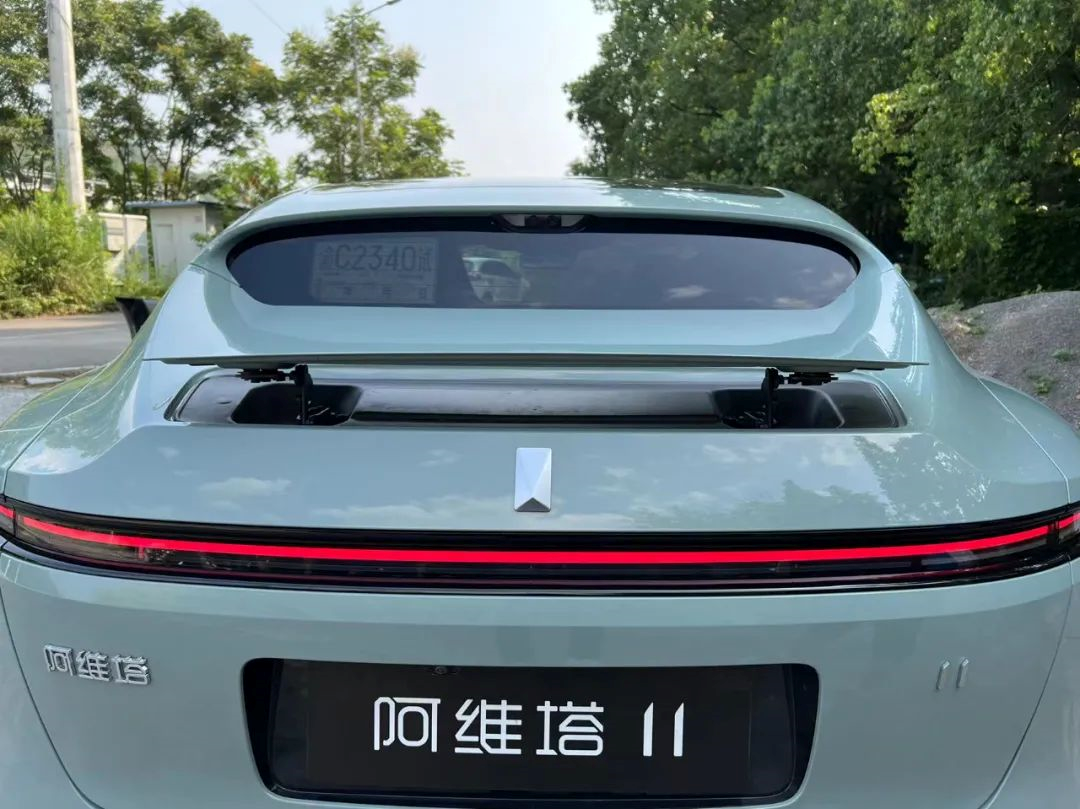
In terms of space, this car is only 4.88 meters long, but has a width of 1.97 meters and a wheelbase of 2.975 meters. The cabin is wide and spacious, making the car both low and comfortable for passengers.
In terms of comprehensive performance, the Avita 11 is equipped with Huawei’s DriveOne dual-motor four-wheel drive, with a maximum power of 425 kilowatts and a low acceleration to 3.98 seconds per hundred kilometers. The entire series is equipped with CATL ternary lithium-ion + CTP2.0 battery pack, with a capacity of up to 90 degrees and 116 degrees, with an energy density of 180wh/kg and 190wh/kg.
In addition, the Avita 11 also supports 240kw fast charging, which can supplement 200 kilometers of cruising range in just 10 minutes.In terms of intelligent cockpit, the Avita 11 adopts the Hongmeng in-car system and reaches a first-class level of gesture control, emotion recognition, and smart voice interaction. In terms of NVH, the Avita 11 has RNC active road noise reduction technology, reducing the total sound pressure level by up to 3 decibels and the peak sound pressure level by up to 13 decibels.
In terms of intelligent driving, Tan Benhong believes that the Avita 11 is the “ceiling” of intelligent driving, with a computing power of 400 TOPS and gradually supporting advanced intelligent auxiliary functions for highways, city roads, and parking scenarios.
Cooperation between “Scientists,” “Engineers,” and “Artists”
The Avita 11 becomes a “ceiling” in these three areas, which may cause controversy in the industry, but its overall strength is outstanding. Behind these three “ceilings,” all three parties have contributed and collaborated.
Tan Benhong described, “The Avita 11 can be considered as a victory shared by scientists, engineers, and artists. Huawei can be regarded as scientists, Ningde and us can be considered engineers. Our global design center in Munich should be considered as an artist.”
The Avita Munich Design Center, as an artist, gives the Avita 11 a bold and futuristic appearance. However, to support this design, especially the large ratio of wheelbase and larger aspect ratio, Avita had to develop a chassis specifically for electric vehicles.
Changan, Huawei, and Ningde Times, “scientists” and “engineers” worked together to create the CHN platform. At the mechanical structure level, it accommodates the characteristics of long wheelbase and wide body. In addition, it created the front trunk, which is only available in pure electric models.
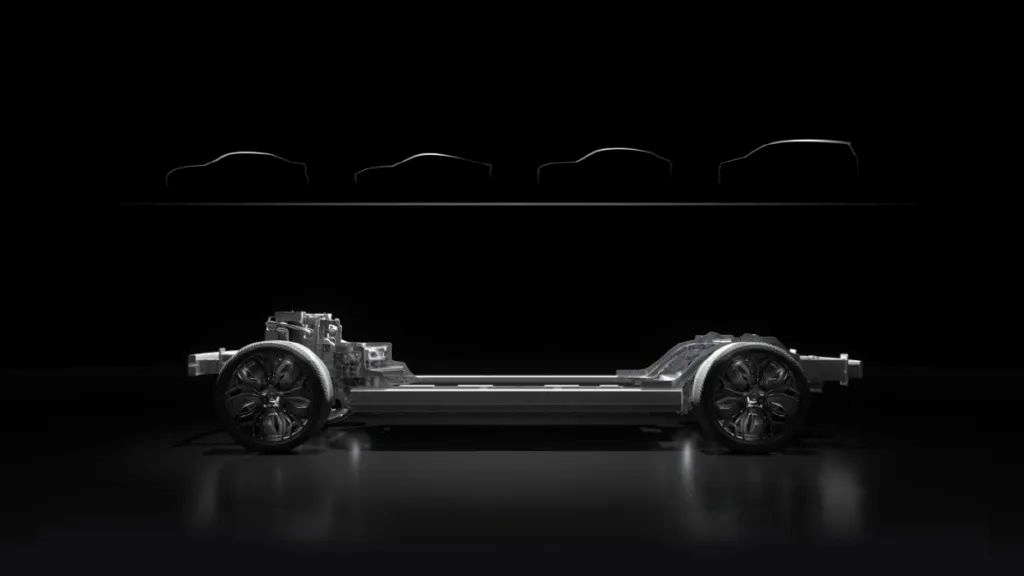
In the future, the CHN platform will support the development of vehicles with a maximum wheelbase of 3100mm and can be extended to various types of vehicles such as sedans, SUVs, MPVs, and cross-border models, and also compatible with two-wheel drive and four-wheel drive forms. Avita will form a product family under this platform’s support.
Of course, the CHN platform also includes energy, electronic and electrical architecture, whole vehicle operating system, whole vehicle functional application, and cloud-based big data levels, providing native capabilities for electric drive performance and intelligence, and is also the foundation for the Avita 11 to achieve outstanding performance in comprehensive performance and intelligent driving. Therefore, Changan’s ability mainly lies in the overall planning and leading development of the CHN platform or architecture.
In terms of performance, the most critical electric drive performance – power and endurance, Huawei and Ningde each contributed to the electric drive system and power battery, which are currently the best products in the market.
Huawei’s dual-motor total power is 425kW, driving the Avita 11 to accelerate from 0-100km/h in 3.98 seconds. At the same time, the dual-motor adopts oil cooling technology and quiet technology, which have better reliability and NVH performance.The battery solution from CATL, a Chinese battery manufacturer, uses 523 middle-nickel ternary batteries with an energy density of 245Wh/Kg and supports 2.2C fast charging technology. The battery pack uses CTP2.0 technology, which not only increases energy density by more than 10% compared to traditional battery packs, but also increases assembly efficiency by 50%.
This solution is unexpected. Despite the demand for high-capacity batteries, CATL did not use a high-nickel battery with high energy density. Instead, it used middle-nickel batteries to achieve higher energy density and 2.2C fast charging capabilities, making it a balanced product.
In addition, CATL’s CTP3.0 battery pack, also known as Kirin battery, will be used in Avita vehicles in the future.
Furthermore, the Avita 11 uses a 750V high-voltage charging platform with a maximum electrical power of 240kW. With a 10-minute fast charge, the cruising range of the vehicle can be increased by approximately 200km. The realization of this performance depends on the high-voltage power system of the entire vehicle and the 2.2C fast charging capability of the CATL battery pack. In addition, most of the DC charging networks are still based on a 500V voltage platform. Huawei has developed a boost control module to make the Avita 11 compatible with conventional fast charging stations.
As a “scientist,” Huawei coordinates the intelligent driving system. The HUAWEI Inside mode gives the Avita 11 the forefront level in the industry. This is built on the CHN architecture and Huawei’s computational power. Based on the Huawei MDC computing platform, Avita and Huawei have jointly developed the AVATRUTH supercomputer system, which provides 400TOPS of computing power, supports 34 sensor devices, and provides advanced driving assistance for highways, city roads, and parking.
“CHN is not just three big guys getting together and making a car. In fact, it combines the advantages of three companies,” commented Wang Jun on the Avita model.
Therefore, when answering questions about the Avita model from Electric Vehicle Observer, Tan Benhong said, “We are different from many other models. Avita has CHN, and we have a cooperative and collaborative model among the three companies, working together and moving forward in unison.”
He also acknowledged, “Are there some challenges in communication and collaboration?”
“I think so,” Tan Benhong said, “But don’t think that if you encounter communication difficulties, you should do it yourself. Can you do it better than others if you do it by yourself? You might think you can handle it well and they will listen to everything you say, but they may not be able to get the job done.”
At this point, Wang Jun interjected and joked, “We also listen very well.”
This article is a translation by ChatGPT of a Chinese report from 42HOW. If you have any questions about it, please email bd@42how.com.
